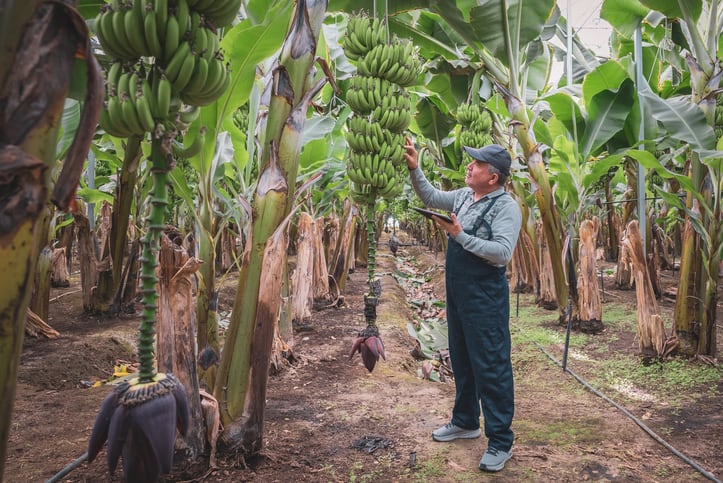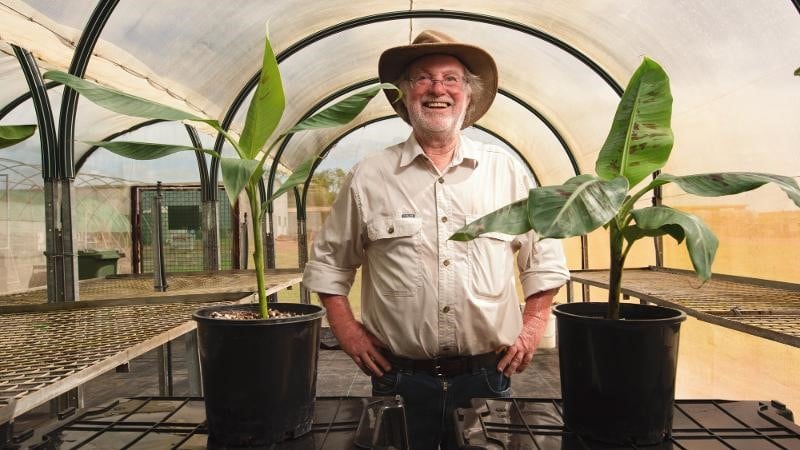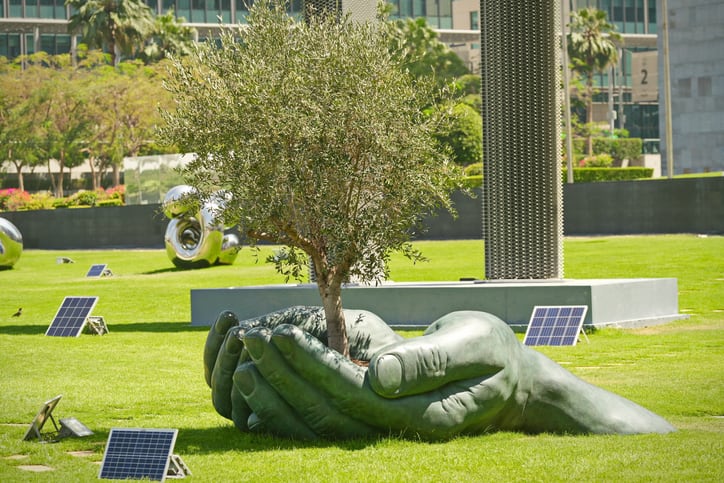On 16 February, Food Standards Australia New Zealand (FSANZ) notified the Food Ministers’ Meeting (FMM) that it has approved QCAV-4 as suitable for human consumption. Food ministers in Australia and New Zealand now have 60 days to ratify the decision or request a review. If they don’t the decision is final.
The Office of the Gene Technology Regulator in Australia also approved a licence for the commercial cultivation of the banana line QCAV-4 in a separate but parallel regulatory assessment.
The QCAV-4 banana is the world’s first GM banana to be approved for commercial production and also the first Australian GM fruit approved for growing in Australia. The QCAV-4 offers a potential safety net against the devastating Panama Disease tropical race 4 (TR4) which threatens the global US$20 billion banana industry.
Thanks to quarantine measures successfully limiting the spread of TR4 in Australia, there are no plans as yet to grow the QCAV-4 banana on a large scale or to sell it to consumers. Instead, the team behind it intend to make the QCAV-4 resistant to the other dreaded banana disease, Black Sigatoka.
Two decades in the making
QUT professor James Dale and his team have been working on developing and growing genetically modified Cavendish bananas for more than 20 years. “This is a major step for QCAV-4 and comes after many years of development,” Professor Dale said.
“We welcome this decision as it’s a very important step towards building a safety net for the world’s Cavendish bananas from TR4 which has impacted many parts of the world already.” QCAV-4 bananas, developed in partnership with government and industry, have been grown in field trials in the Northern Territory for more than seven years and have proven to be highly resistant to Panama Disease TR4.
Could climate change move the needle on GM technology?
Panama Disease TR4 has already crippled Cavendish banana production in Asia, has started to take a foothold in South America and occurs in Australia in the Northern Territory and North Queensland. QCAV-4 is a Cavendish Grand Nain banana that has been bioengineered with a single banana resistance gene, RGA2, from the wild, south-east Asian banana, Musa acuminata ssp malaccensis.
Cavendish bananas already contain the RGA2 gene, but it is dormant. “The devastating Panama Disease TR4 is caused by a soil-borne fungus that stays in the ground for more than 50 years, wiping out banana crops and destroying farms for generations,” Professor Dale said. “It is a huge problem. It has devastated Cavendish plantations in many parts of the world and could cripple the Cavendish banana export industry worldwide.”

QUT Vice-Chancellor Professor Margaret Sheil said this was a significant milestone for the QCAV-4 research team at QUT, where the Banana Biotechnology Program has been at the forefront of banana research for more than 25 years. “It has been 20 years since QUT researchers received an Australian Research Council grant to search for potential TR4 resistance genes,” Professor Sheil said.
“This is a wonderful example of fundamental research progressing through a commercialisation journey into a tangible outcome. QUT, along with our wonderful funders and partners, has been supporting the research for two decades so it’s fantastic to reach this milestone.”
FSANZ food safety assessment
FSANZ safety assessment found food derived from banana line QCAV-4 is as safe and nutritious as comparable conventional banana already in the Australian and New Zealand food supply. The assessment considered the genetic modification, potential unintended changes, the nutrient content compared to conventional bananas and potential allergenicity or toxicity.
Safety net
Australia’s biosecurity rules have so far limited the impact of Panama Disease TR4 on the majority of the Australian industry, however it has been found in parts of North Queensland and has decimated the Northern Territory commercial banana industry. “About 95 per cent of Australia’s bananas are grown in Queensland, and Cavendish banana accounts for 97 per cent of production,” Professor Dale said. “Apart from providing a genuine protection against Panama Disease TR4 for the world’s export industry, QCAV-4 is a safety net for Australia’s $1.3 billion industry, which includes protected employment for 18,000 Queenslanders involved in banana production.”
Food products
If cultivated, food derived from the disease-resistant GM banana would primarily be available in Australia as fresh fruit. It also may be used in processed food i.e. dried or frozen banana, banana pulp and various baked goods.
New Zealand EPA has advised that food businesses intending to export / import fresh GM banana to / into New Zealand will need to consult the EPA about whether the fresh banana fruit would be considered a new organism. Additionally, New Zealand MPI has advised that food businesses should seek advice about biosecurity requirements from MPI.
Existing labelling requirements for GM foods will apply to food derived from this banana line. Existing exemptions from GM labelling requirements, including for food sold in restaurants, will also apply.





